Our Mission

Gluon Digital is on a mission to help Salesforce implementation partners be more successful when it comes to migrating data for their clients.
Our ultimate goal is to clean up the world's CRM data, by educating the Salesforce Ohana on data best practices, and leading by example to prove those best practices work.
Strong data makes Salesforce strong.
Services
Our services are directly related to Our Mission.
We clean up the world's CRM data, by educating the Salesforce Ohana on data best practices, specifically:
- Our founder published THE book on Developing Data Migrations and Integrations with Salesforce.
- We share knowledge on the Salesforce Data Blog. The only blog exclusively dedicated to Salesforce and data.
- We regularly speak on various topics regarding Salesforce data quality, strategy, migrations, and integrations.
We lead by example to prove those best practices work by:
- We partner with Salesforce SIs (System Integrators) who are tired of having data issues and failed migrations causing project failures. We can either partner with your delivery organization to train them on properly performing data migrations, or we can act as and outsourced white labeled data migration department, handling all your data migrations, and guaranteeing success.
- Partnering with our clients to tackle the most complex Salesforce data projects. Helping them devise an overall data strategy, clean up existing data, migrate their data to Salesforce and build integrations.
We are not a Salesforce SI, we don’t compete with Salesforce SIs, we partner with them.
About Us
Gluon Digital was founded by David Masri in 2020 with the goal of promoting data migration and integration best practices to the Salesforce Ohana. Prior to founding Gluon Digital, Dave has spent years working with data and with Salesforce. He has been involved in dozens of Salesforce data migration and integration projects and has used that experience to run numerous training programs for aspiring integration/migration specialists, and then ultimately authored his book on the subject.
Previously Dave was the Director of Professional Services at Plative, a Salesforce Silver Partner. Before that he was the Technical Director of Data Strategy and Architecture for Capgemini Invent's Salesforce Practice. He has more than 20 years of hands-on experience building integrated ERP, BI, e-commerce, and CRM systems, and for the past seven years has worked exclusively with the Salesforce platform. Dave holds more than ten professional certifications, including nine Salesforce certifications, the PMP (Project Management Professional), and Google’s Data Engineer Certification.

Blog
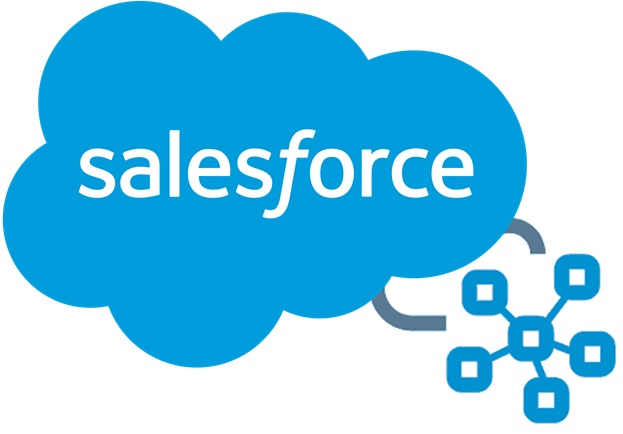
The Salesforce Data Blog
The Salesforce Data Blog is a “Distributed Blog”, It’s a collection of our (mostly Dave’s) writings from around the web. (For more information on why we chose a distributed blog, see
this article.)
It’s specifically maintained as part of our mission: “To clean up the world's CRM data, by educating the Salesforce Ohana on data best practices”
Below you will only find articles directly related to Gluon Digital, but we advise you to visit https://SalesforceDataBlog.com for more technical and in depth content related to Salesforce & Data.
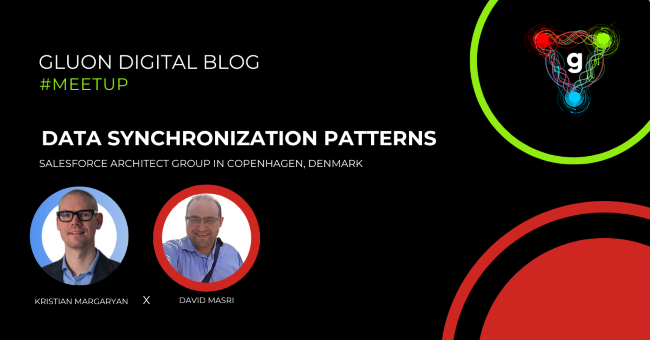
Data Synchronization Patterns balancing simplicity with performance - Copenhagen Salesforce Architect Group
Last week, I gave a talk at the Copenhagen Salesforce Architect Group Monthly virtual meetup on Data Synchronization Patterns: balancing performance and simplicity. In case you missed it here is the r...

On The Peiroll with Pei Mun Lim & David Masri
Last week I had a great time talking with Pei Mun Lim for her "On The Pei Roll" podcast available on Spotify. We talked about my journey (career path) to the eventual founding of Gluon Di...
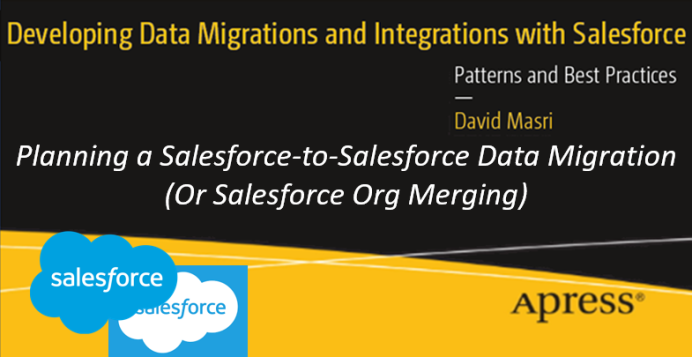
Planning a Salesforce-to-Salesforce Data Migration (Or Salesforce Org Merging)
I've been in the CRM space for nearly 15 years, when I started most of my projects where from clients looking to implement a divisional or enterprise-wide CRM system for the first time. Often, they ha...
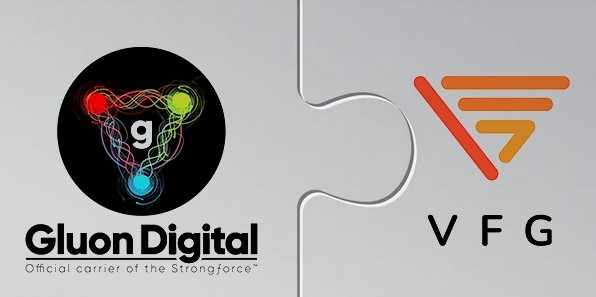
Announcing our partnership with VFG Consulting
Gluon Digital is partnering with VFG Consulting! I'm proud to announce that I have joined VFG Consulting as Partner/Strategic advisor to help them build out there our Azure, Data and Analytics Practic...
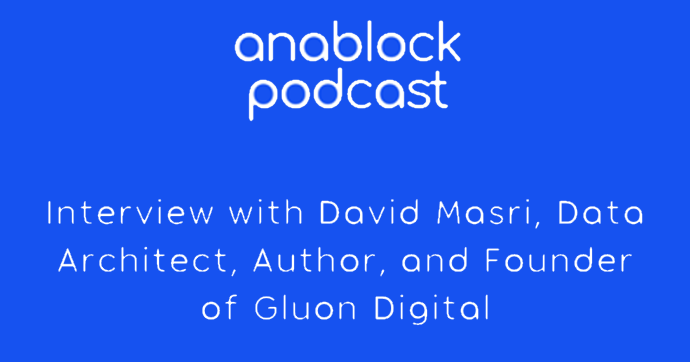
Anablock Podcast: Interview with David Masri, Data Architect, Author, and Founder of Gluon Digital
I recently had the pleasure of sitting down with Vuk Dukic of Anablock for his podcast. We spoke about the work I'm doing at Gluon Digital, why I started the firm, my book, some data best practices, s...

Salesforce Q& A with David Masri, Founder @ Gluon Digital
I recently had the pleasure of sitting down with Caitlin Edwards for a Q&A as part of #Salesforce Republics Q&A blog Series. We discussed a wide range of topics: benefits of getting involve...
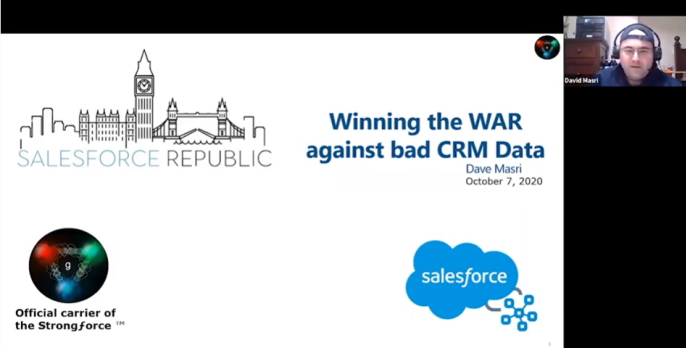
Salesforce Republic Talk (10/7/2020): Winning the War against bad CRM Data
A few weeks ago, I gave a talk at the UK Salesforce Republic meetup titled "Winning the War against bad CRM Data". I covered exactly that, first a discussion on the root causes of bad CRM...
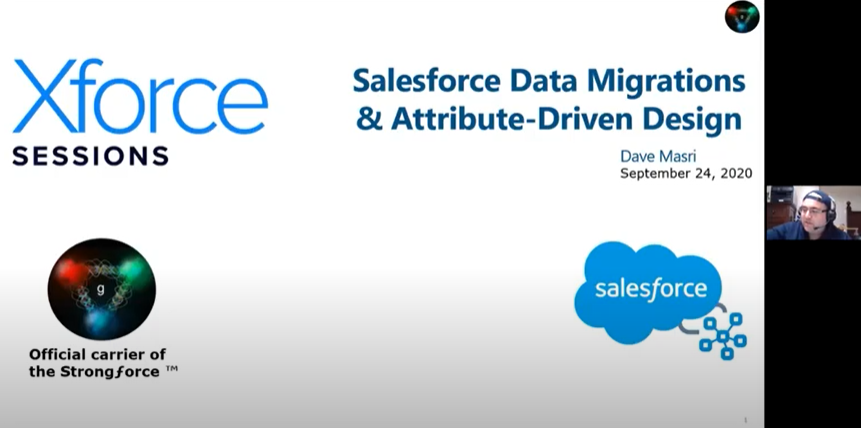
Xforce session: Salesforce Data Migrations and Attribute Driven Design
If you missed my Xforce session talk last week (9/24/2020) the recording is now available online! Salesforce Data Migrations and Attribute Driven Design. ...
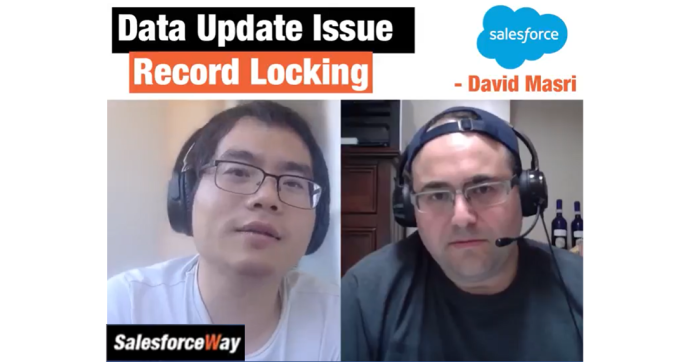
SalesforceWay.com Podcast: 75. Data migration and integration | David Masri
I recently had the pleasure of being a guest on Xi Xiao's podcast "Salesforce Way". We discussed a variety of topics related to Salesforce and data architecture. A very interesting talk...
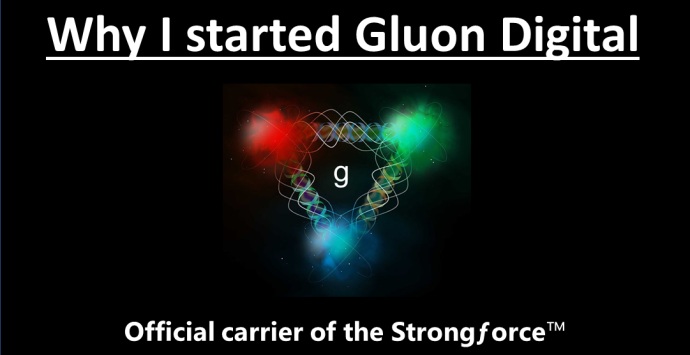
Why I Started Gluon Digital
From the moment I decided to change my major to computer information systems (away from finance) I knew I wanted to work with data. A big part of it was the data processing course I took. I found a be...

Integrating FAT (locally installed apps) with Salesforce using a Custom Protocol
Ever need to integrate Salesforce with a local FAT application? This article will explain exactly how to do that with no backend code! That's right! You can a launch locally installed FAT apps directl...
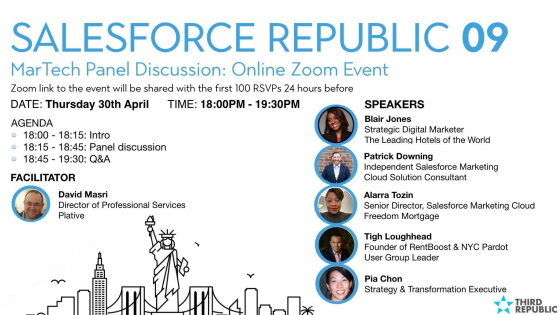
Highlights: MarTech Panel 4/30/2020
Last week I had the honor of moderating a forum on #MarTech (Marketing Technology) as part of our very first virtual #SalesforceRepublic meetup - it was a lot of fun and a huge success, we had nearly ...
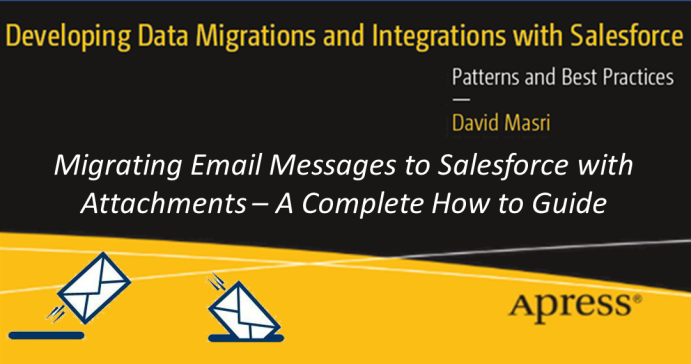
Migrating Email Messages to Salesforce with Attachments - A Complete How to Guide.
Historically when migrating email messages to Salesforce we have been asked to load them as tasks, but with the release of the Enhanced Email functionality a while back, it's becoming increasingly com...
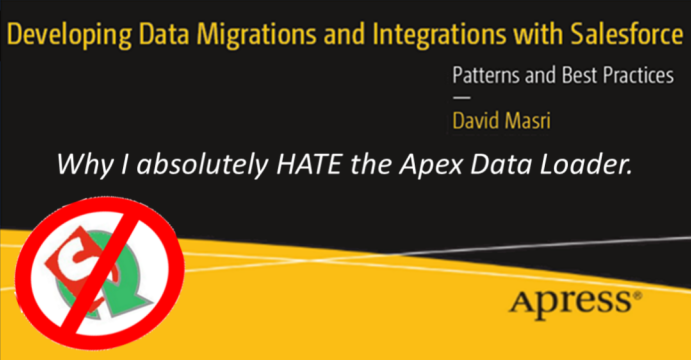
Why I absolutely HATE the Apex Data Loader.
I really hate the Salesforce's Apex Data Loader, I really do. Not because it's a bad app, it's quite a good one (at least as far as utilities go), the reason I hate it is simply because it exists. Let...
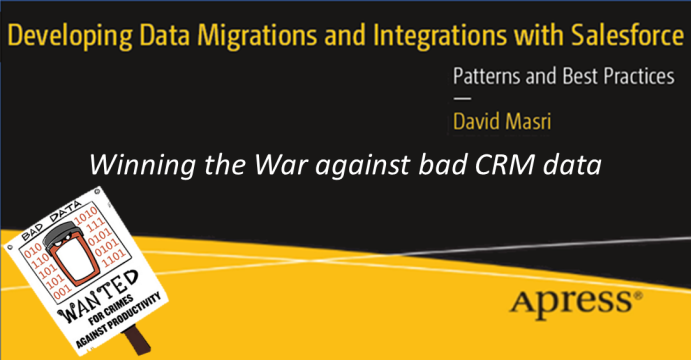
Winning the War against bad CRM data
A few month ago I authored an article titled "Why are CRM systems so susceptible to bad data?", and in that article I laid out what I felt (and still do feel) are the root causes of bad CRM ...
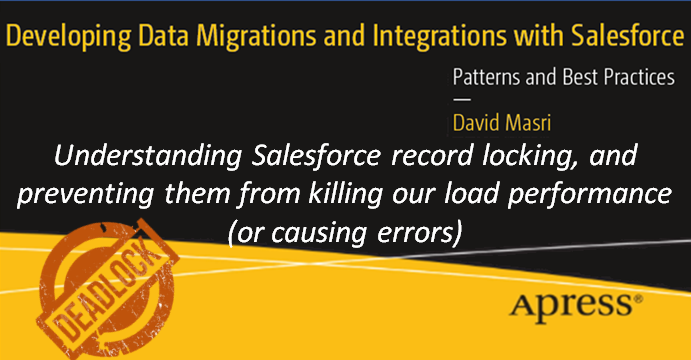
Understanding Salesforce record locking, and preventing them from killing our load performance (or causing errors)
Just like most relational database systems, Salesforce locks records when they are being modified, to prevent two people from updating the same record simultaneously, which would result in a conflict....
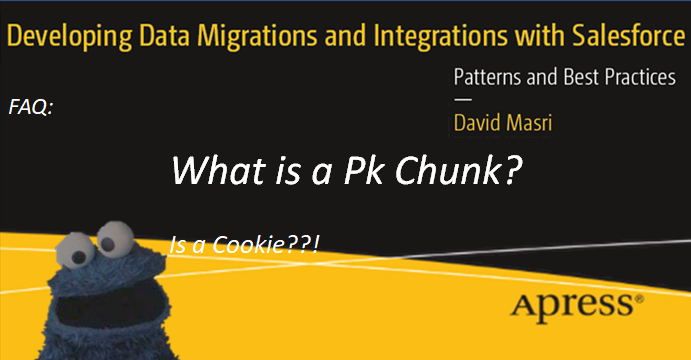
FAQ: What is a Pk Chunk?
PK Chunking is a feature that was added to the bulk API back in 2015, that when used, is supposed to improve the performance of large data downloads from Salesforce. Most native objects and all custo...
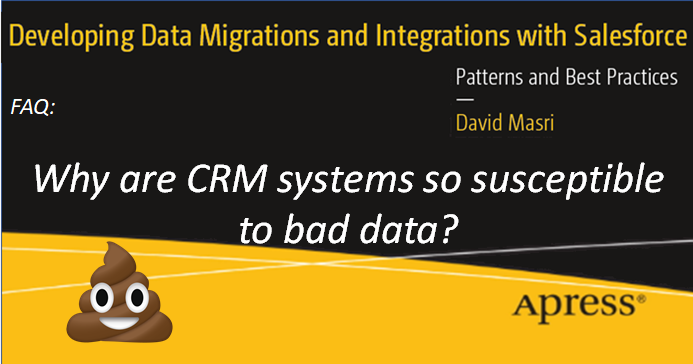
FAQ: Why are CRM systems so susceptible to bad data?
It's no secret that CRM systems are often plagued with bad data. Recently I asked myself "Are CRM systems more susceptible to bad data then other Systems, and if so, why?". I think the answe...

FAQ: What is the difference between a Data Migration and a Data Integration?
It's a surprisingly common question, I get asked it at least once a month: What is the difference between a Data Migration and a Data Integration? From a strictly definitional perspective, a data mig...
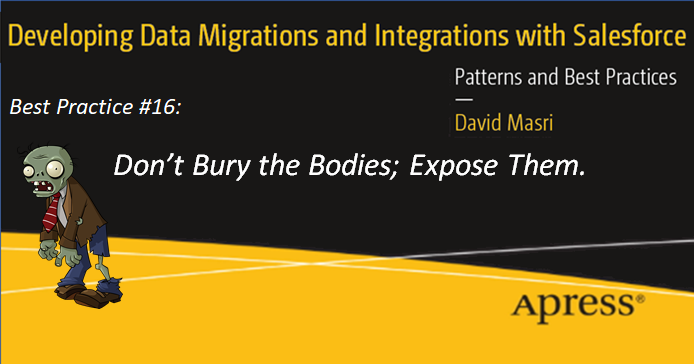
Developing Data Migrations and Integrations with Salesforce - Best Practice #16: Best Practice 16: Don't Bury the Bodies; Expose Them.
This is a lesson I learned early on in my career the hard way. Although I have no proof that people are doing this, I'm know it's incredibly common. Consider the following situation and think about ho...
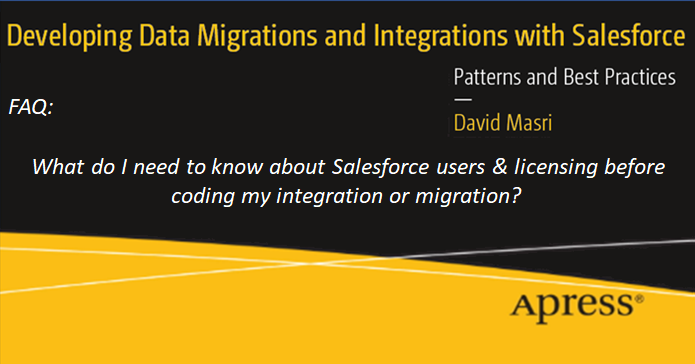
FAQ: What do I need to know about Salesforce Users & Licensing before coding my integration or migration?
In this article I outline everything you need to (at least) be aware of about setting up users prior to coding your data migration or integration with Salesforce. Let's get started! The Salesforce U...
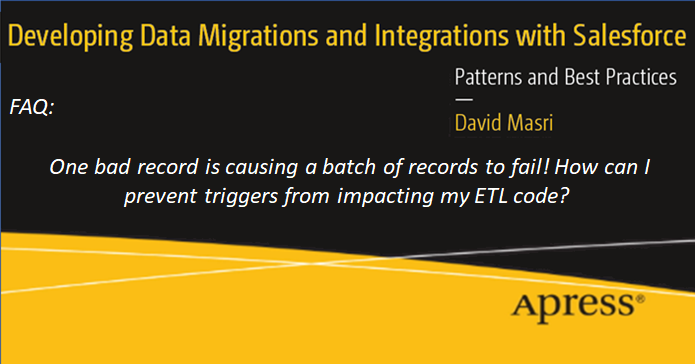
FAQ: One bad record is causing a batch of records to fail! How can I prevent triggers from impacting my ETL code?
Salesforce triggers need to be coded in such a way as to be able to process batches of data. This process is referred to as "bulkifying" the trigger. If a Salesforce trigger is not properly ...
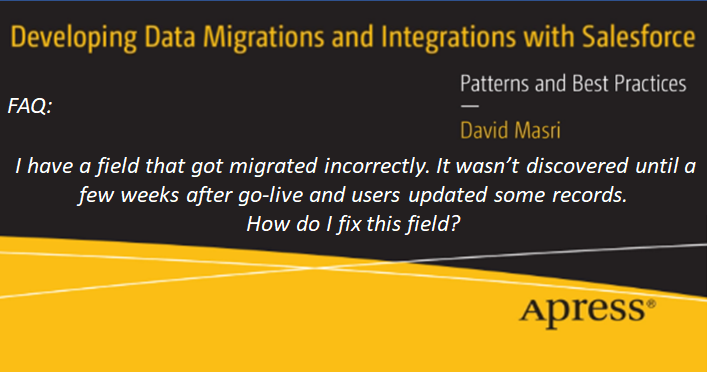
FAQ: I have a field that got migrated incorrectly. It wasn't discovered until a after go-live, and users updated some records. How do I fix it?
When you are migrating your data to Salesforce it's not uncommon to be migrating dozens of objects and hundreds of fields. Regardless of how thorough your testing is, defects may be found weeks, even ...

"inNote - Keep Notes on your LinkedIn Contacts!" or "Building Chrome Extensions for App Integrations"
This article will walk you through my experience codeing a simple Chrome extension (inNote) as a learning exercise. It allows you to enter notes against LinkedIn Contacts and Companies. You can downlo...

Developing Data Migrations and Integrations with Salesforce - Best Practice #31: Every Record You Insert or Update Should Have a Job ID.
Most Salesforce integration specialists know to always mark data loaded to Salesforce with an external Id even if they are performing an Insert or Update as opposed to an Upsert. This makes perfectly ...
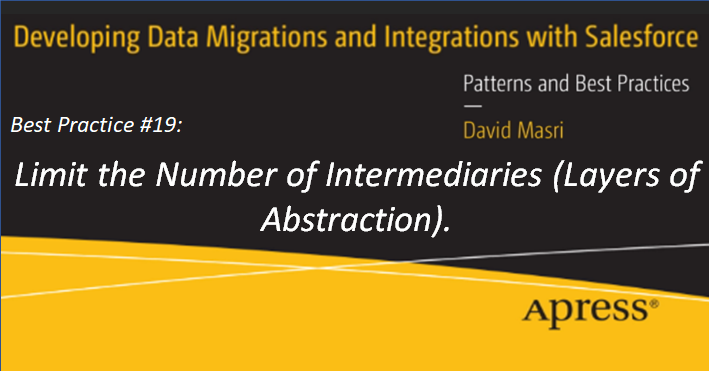
Developing Data Migrations and Integrations with Salesforce - Best Practice #19: Limit the Number of Intermediaries (Layers of Abstraction)
Anytime you move data from one system to another or from one format to another, you run the risk that something will be lost or modified in the translation. This situation is a classic case of leaky a...
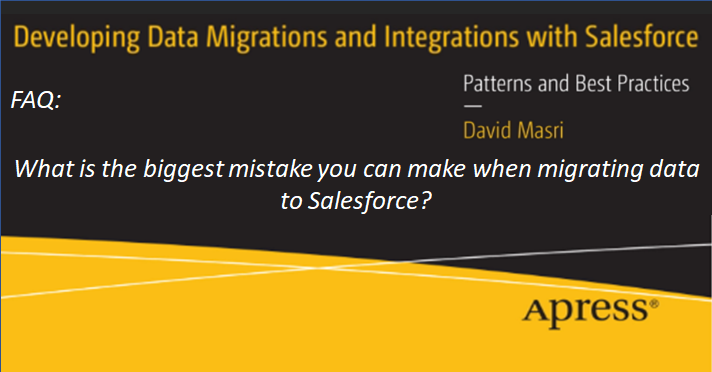
FAQ: What is the biggest mistake you can make when migrating data to Salesforce?
This is a question I get asked a lot, and my answer is always the same: "By far, the biggest mistake you can make when migrating data to Salesforce, is thinking of your data migration as a one-ti...
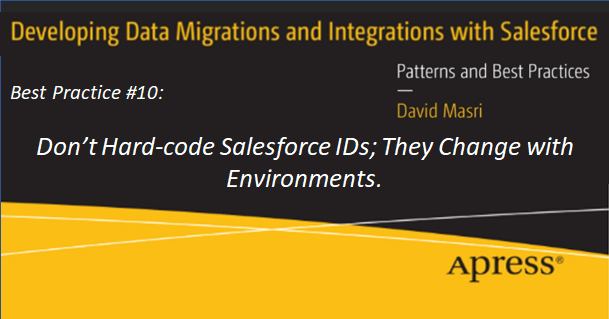
Developing Data Migrations and Integrations with Salesforce Best Practice #10: Don't Hard-code Salesforce IDs; They Change with Environments
When coding data migrations or integrations with Salesforce it's not uncommon to have a need to specify specific record Ids in your code......
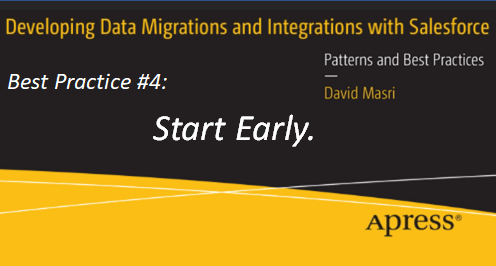
Developing Data Migrations and Integrations with Salesforce - Best Practice #4: Start Early.
The nature of data migrations is such that it's often not on the critical path, except as a dependency to start of QAUAT. Because of this, early in the project, data tasks are often looked at as lower...
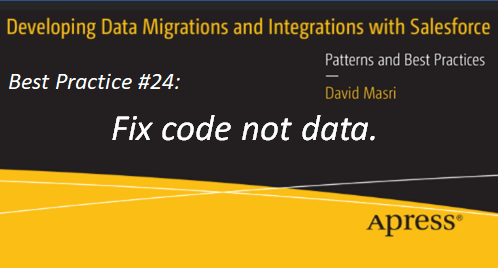
Developing Data Migrations and Integrations with Salesforce - Best Practice #24: Fix code not data.
When coding your migrations or integrations you'll come across bad data. It's better to alter your transformation code to fix that data rather than fix the data itself......
What is a Gluon?
Keeping this really simple: basically, there are four fundamental forces of nature, gravity, electromagnetism, the weak force, and the strong force. Gravity is what makes apples fall on your head, electromagnetism pulls magnets to each other by forming chemical bonds, the weak force is responsible for radioactive decay, and lastly the strong force holds hadrons together. (For example: the protons in the nucleus of an atom are a type of hadron). The strong force is by far the strongest of the four forces.
Each of these forces are transmitted or “carried” by a particle (except maybe for gravity, nobody knows how that thing works, so we just assume it works kind of like the other three forces). Gluons are the particles that carry the strong force.
Gluons are the official carrier of the Strongƒorce™.
Still confused, or want to know more? Watch this children’s video:
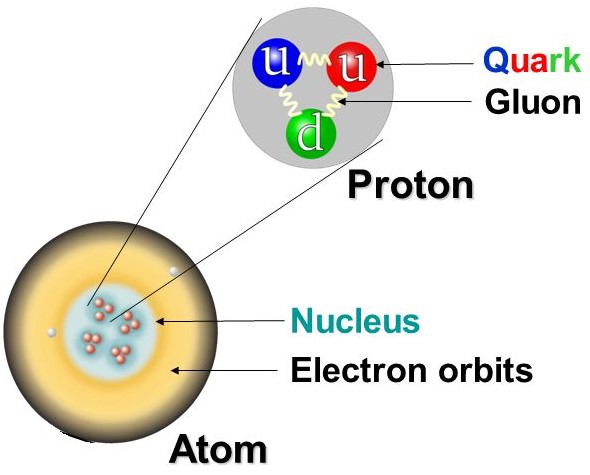
Contact Us
Good Reasons to Contact us
- You want to partner with us.
- You have an opportunity/proposal that is mutually beneficial.
- You are planning an event and would like us to participate and\or speak at.
- You have an interesting problem and would like our take on it.
Bad Reasons to Contact Us
- You want to sell us something (we're not interested).
- You think we want to be on your mailing list (we don’t).
Contact Details
-
Email
Dave@Gluon.Digital
Schedule a Call - Phone (347) 688-9427
-
Subscribe to our mailing list
(Just Blog Articles, No Ads or Spam!)